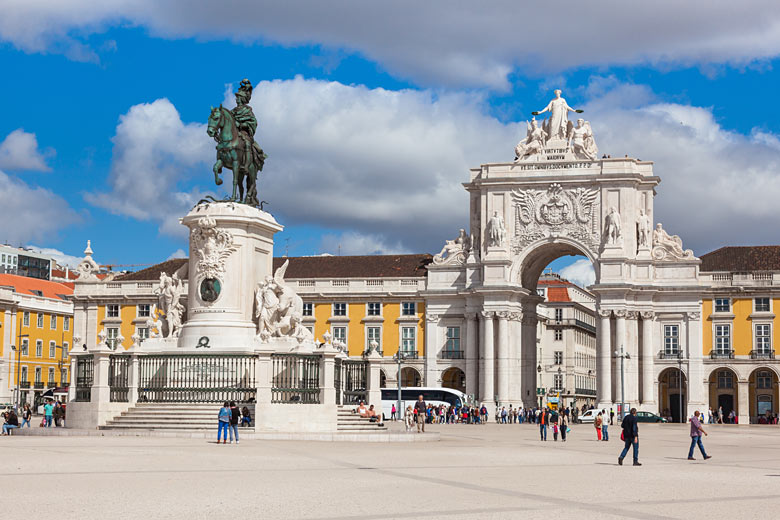Why you need to visit the Alentejo, Portugal
Introducing a different side of Portugal: the Alentejo. This expansive, geographically diverse and laidback region borders the Algarve and encompasses large swathes of land, from the Atlantic coast across to the Spanish border.

Yet, many people are unaware of this region's countless attractions and opt for the more familiar. In this instance, we're looking specifically at the central, eastern and northeastern areas of the Alentejo region which make a wonderful itinerary for anyone wanting to try something new on a holiday to Portugal.
It has the UNESCO seal of approval
The Alentejo has two UNESCO World Heritage sites within its fold at Évora and Elvas. Make time to get a feel for each city, both fully stocked with traditional whitewashed houses, countless cafés and happy, laidback vibes.
Évora
First up is ancient Évora, the region's main, but compact, city and cultural hub. It earned UNESCO status in 1986 for its well preserved old town and the sheer volume of historic buildings and statues, all neatly wrapped up within its medieval walls.
Tracing its roots back more than five thousand years, Évora's highlights include the cathedral and eerie Chapel of (human) Bones in the Church of Saint Francis, as well as the 16th-century aqueduct and the iconic Roman temple remains.
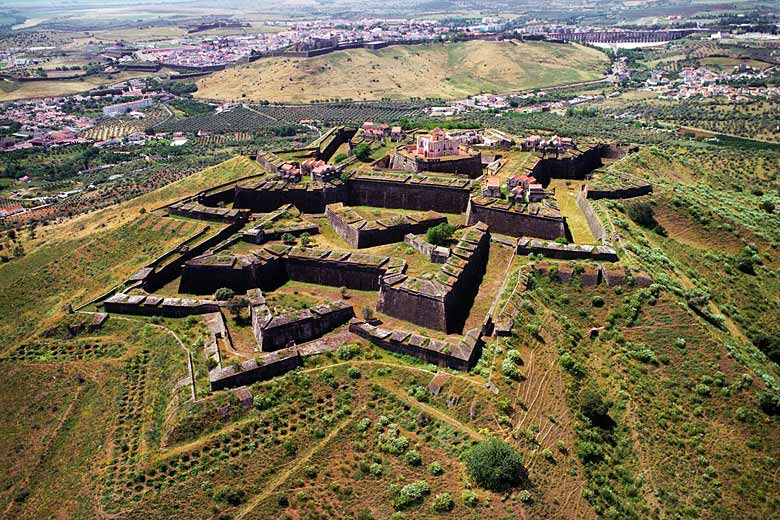
Elvas
Next stop on the UNESCO trail is the border city of Elvas. Awarded world heritage status in 2012, Elvas and its fortifications attract those keen to find out more about the pivotal role this region has played in Portugal's evolution.
From the striking star-shaped 18th-century Fort of Graça and nearby 17th-century Fort of Santa Luzia, to the huge aqueduct, city walls and castle, Elvas is full of tasty eye treats and historic architecture.
You can inspect 8,000 year-old standing stones
Just west of Évora, down a bumpy dirt track, you'll find the Cromlech of the Almendres, the largest collection of standing granite stones (or menhirs) discovered so far on the Iberian Peninsula.
This megalithic complex is believed to date from 6,000 BCE with various additions made over the following millennia. A selection of stones also carries engravings and symbols, which feed the theory that they either played a vital part in some spiritual or religious ceremony or were used as a very early form of observatory.
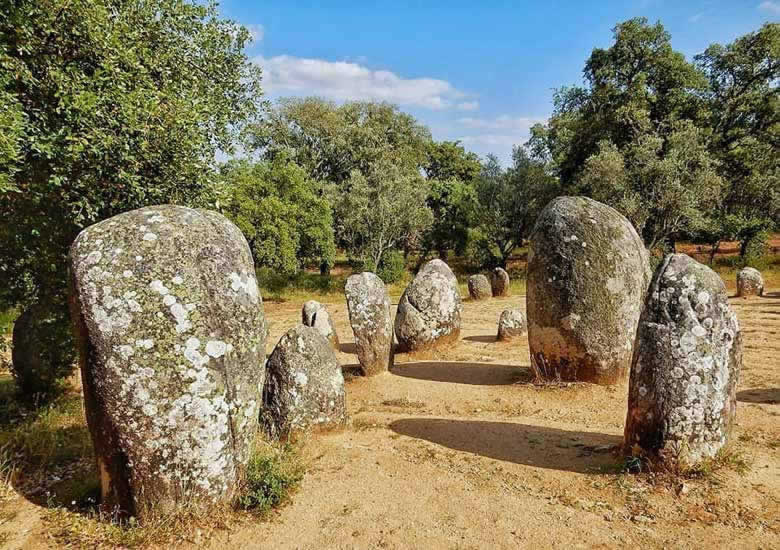
The stones, which span both the neolithic and so-called 'copper' age, were rediscovered in 1966, and stand in splendid isolation surrounded by cork trees and waving wheat fields that certainly wouldn't have disrupted their hillside view when they were first erected.
Go early in the morning or late afternoon to avoid the tour buses and take pleasure in the lack of a visitors' centre and souvenir shop. Do look out for the information boards dotted around, which explain the site in good detail.
There's a seriously cool wine route
When it comes to wine, Portugal is often overshadowed by its Rioja-rich neighbour. Slowly, however, people are waking up to Portugal's burgeoning wineries and vineyards. So much so, there's now an official, fully regulated, wine route for you to follow through the Alentejo region. The route is clearly signposted and ensures you sample the very best of the best.
The Alentejo Regional Winegrowing Commission (or Comissão Vitivinícola Regional Alentejana) is in charge of creating and maintaining the wine route, guaranteeing only vineyards producing wines certified by the commission are included in the listing.
If you're visiting Évora and plan to do a little wine-touring in the region, call by the commission, which is open to the public for anything from fact-finding and maps to a tasting session with the knowledgeable team.
The Alentejo wine route is designed to showcase the finest local, independent producers. Think traditional country houses with oodles of charm and immensely warm hospitality.
Unlike great sweeping estates found in France or the USA, for example, the Alentejo wineries are often family-run and do require advanced booking if you would like to visit and/or stay. Simply polling up means you run the risk of missing out, so do plan ahead.
And countless pretty hilltop towns
When planning to explore the Alentejo, notably the Alto - or high - Alentejo, you'll need to pack your hiking legs. As the name suggests, the landscape climbs away from the rolling plains surrounding Évora, up into lush forests and rocky peaks.
The difference is immediately obvious as you ascend towards the Serra de São Mamede, along winding roads through sleepy villages and scenic towns.

Castelo de Vide
Castelo de Vide is one of those postcard-perfect towns with traditional whitewashed cottages, colourful flower pots and sleepy cats in all the right places. It is incredibly pretty and, if nothing else, go for a wander around the steep streets to see the original houses, still occupied, at the top of the town within the crumbling walls.
Castelo de Vide is also said to be the home of Portugal's oldest synagogue, which you can visit in the Jewish quarter. There's interesting architecture at every turn with renaissance squares rubbing shoulders with gothic doorways and streets.
Marvão
Meanwhile, the medieval border town of Marvão and its 9th-century castle sit atop a rocky granite crag begging to be visited. Of course, you can drive up to Marvão, but where's the fun in that?
To really appreciate its location, hike up from Portagem below. However you get there, once you've meandered through the maze of winding, bougainvillaea-filled streets and peered across into Spain (fewer than three miles to the east), seek out O Castelo Café Lounge for a sundowner on the popular garden terrace.
Just remember to check that your phone hasn't automatically switched over to Spanish time!
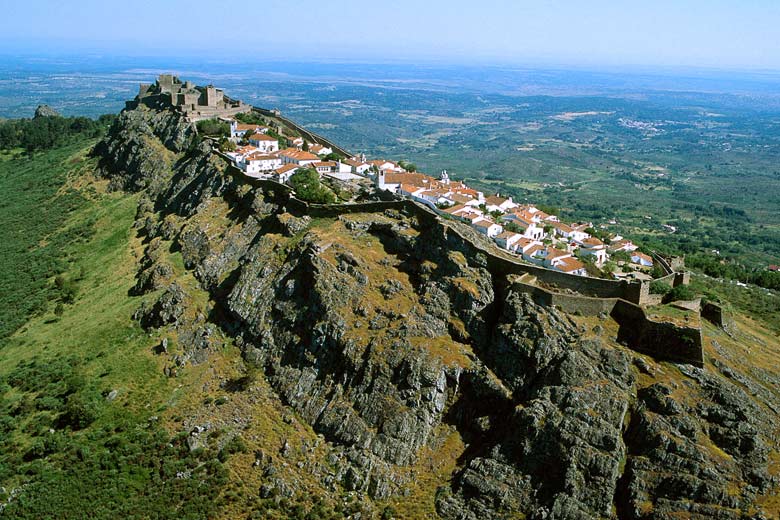
Monsaraz
Further south on the border with Spain sits the tiny medieval town of Monsaraz, fortified by the Knights Templar and today home to a handful of locals who call this peaceful hilltop village home.
Go for the castle and its ramparts, which are impressive whether you're looking inwards at the striking bullfighting arena or outwards over terracotta-topped houses down onto the surrounding plains and the Alqueva reservoir. Monsaraz has a good selection of B&Bs, and it's certainly worth spending a night on high up here.
It's great for outdoorsy types
What this part of the Alentejo lacks in coastline, it more than makes up for in impressive sweeping landscapes, mountains, lakes and wildlife. The region is geared towards those who simply want to get stuck into the great outdoors with walking trails, water sports, campsites and so much more on offer.
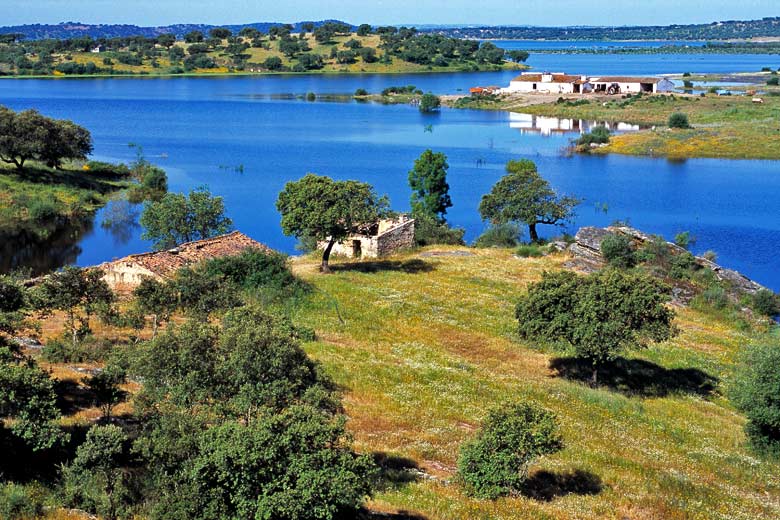
Alqueva Dam & the Great Lake
The Alqueva Dam is a relatively new addition to the region. It was, somewhat controversially, built in 2002, flooding the surrounding valley (including many villages), creating an enormous reservoir now known as the Great Lake. Given the Alentejo's notoriously hot and dry climate, the dam was constructed to help with the distribution of water.
It may be one of the biggest artificial lakes in Europe - all 96 square miles of it - but people and wildlife have been quick to make themselves at home on, in and around it. There are biking and hiking trails aplenty as well as lots of places to rent sailing, canoeing and kayaking equipment, not to mention campsites.
The area is also a Dark Sky Reserve, making it a must for stargazers thanks to the very low levels of light pollution. It truly is a magnificent place to pitch up for a few days or longer.
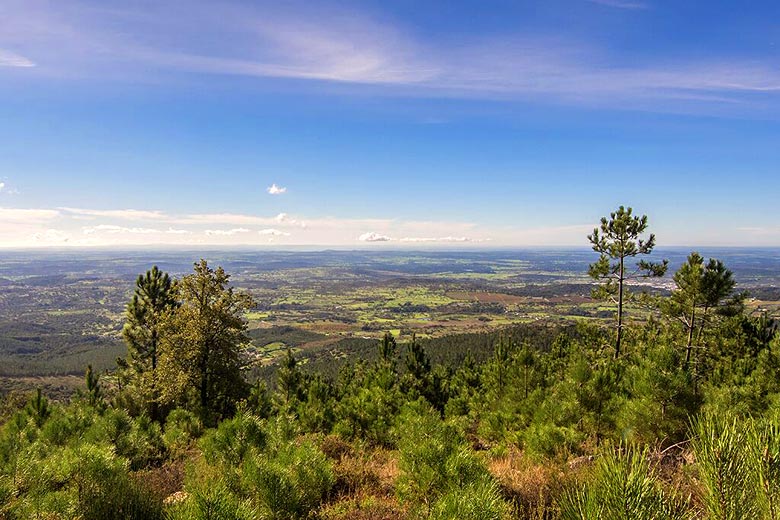
Serra de São Mamede Natural Park
If you're heading to the Alto Alentejo and the Serra de São Mamede Natural Park, you will want to pick up a copy of the Alentejo Feel Nature route map, which showcases official paths of varying degrees of difficulty and duration.
There really is a walk for everyone, and you can incorporate anything from historic ruins and abandoned villages to wildlife. Check out Landscape Walks for expert local knowledge to help you plan the perfect route.
For olive oil made with love
It's a fact: not all olive oil is created equally. For every small-scale olive grove in the Alentejo, there's a whopping great big field with row-upon-row grown on an industrial scale for big-brand olive oil production.
It's fair to say that independently owned and traditionally grown is best - that's certainly what the message Antonio Melara Nunes, the passionate owner of Azeite Castelo de Marvão (or Marvão Castle Olive Oil), would have you believe anyway.
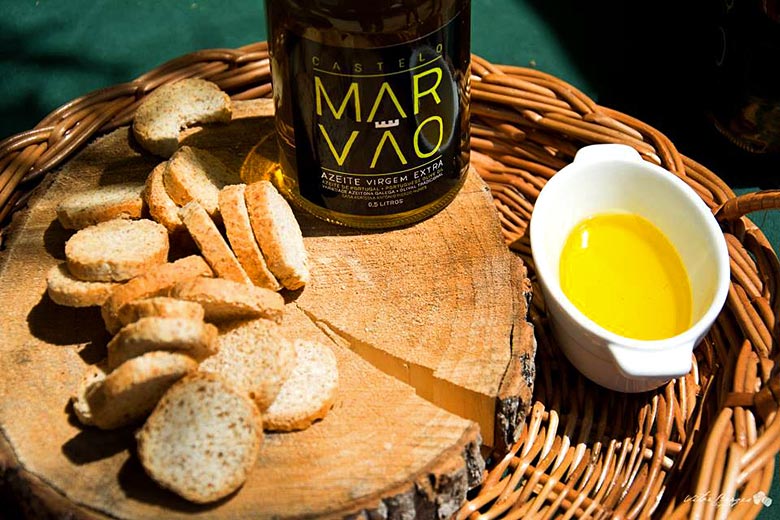
If you're after an experience and an education with a side of olive oil to take home, call by the delightful factory museum and shop in the village of Galegos. See how Antonio - who starts every day with a teaspoon of olive oil - has not only lovingly revived his grandparents' mill but also dragged it into the modern age.
He proudly maintains a strong connection with his community and produces, he says unashamedly, the best olive oil in Portugal if not the world. And after taste testing, it's hard to disagree; who knew olive oil was so good drizzled on fruit?
We can tell you when to go
If there's one thing we know here at Weather2Travel.com, it's when to go somewhere for the right conditions. Weatherwise, the Alentejo is an interesting region.
While you would certainly find conditions along Alentejo's western coast similar to that of the Algarve with high temperatures and cooling sea breezes, inland Alentejo things are a little different. The climate here is typically drier and hotter, although as you rise into the Alto Alentejo, the air becomes fresher and night times are cooler.
| Jan | Feb | Mar | Apr | May | Jun | Jul | Aug | Sep | Oct | Nov | Dec | |
|---|---|---|---|---|---|---|---|---|---|---|---|---|
| Maximum daytime temperature °C | ||||||||||||
| Hours of sunshine (daily) | ||||||||||||
| Days with some rainfall |
The above shows the weather in Évora
The key to enjoying the Alentejo is to go at the right time for what you have planned. If it's camping, walking, and trekking up and down hilltops, then it's hard to beat the months of May and June. At this time, the weather is warm and there's loads of sunshine but it's before the searing heat (not to mention busy period) of July and August.
Autumn is another nice time to go, however, the land is often parched and thirsty after summer. Winter months are pleasant and sunny but, of course, they're not as warm as spring. So, if you're going to eye historic monuments, wander around the ramparts of UNESCO forts, and hike in the nature trails, then spring is the time for you.
Discover more about the weather >>
It's great value
There's no way around it; the Alentejo is best explored with your own set of wheels. A quick glance at a map* will tell you all you need to know about the roads in the Alentejo. Unlike regions to the north, the Alentejo's road network is less crowded and easy to navigate. This is a real plus for those looking to do a 'fly drive*' holiday.
Book your cheap holidays and flights to Portugal and check out the latest car hire deals to get you on the road in the Alentejo for less.
More about Portugal
- Overview
- Best time to visit
- Weather by month
- 5-day weather forecast
- Destinations
- Travel advice
- Deals & discounts
Portugal by month
Jan Feb Mar Apr May Jun Jul Aug Sep Oct Nov Dec
Explore holidays in the sun for less
- Beach holidays
- Family holidays
- City breaks
- Summer holidays
- Winter sun holidays
- Holiday offers
- Top travel brands
- Airlines & flights
- Discount hotels
- Airport parking deals
- TUI
- Jet2holidays
- easyJet holidays
- Love Holidays
- Black Friday sales
Airport parking
- Manchester Airport
- Stansted Airport
- Bristol Airport
- Luton Airport
- Birmingham Airport
- Edinburgh Airport
- Gatwick Airport
- Glasgow Airport
- Newcastle Airport
Airport lounges
- Manchester Airport
- Birmingham Airport
- Bristol Airport
- Edinburgh Airport
- Glasgow Airport
- Heathrow Airport
- Newcastle Airport
- Stansted Airport
- Gatwick Airport
Be inspired
Get your weekly fix of holiday inspiration from some of the world's best travel writers plus save on your next trip with the latest exclusive offers
We promise not to share your details




























